2006 Volkswagen Phaeton V8

| The Good: – Amazing interior features – Tons of cabin space – Comfortable highway cruiser |
The Bad: – High price with options – Too anonymous for the price – Poor fuel economy |
At one point during the early part of this century, Volkswagen decided to move its line even further upmarket than it already is. The fruit of that ill-fated move is the full-size Phaeton, an arguably ground-breaking luxury super-sedan that shares showroom space with other VW machinery as classy as the Polo and the Beetle, while VW-owned divisions still peddle the Audi A8 and the Bentley Continental Flying Something-Or-The-Other.
The big VW certainly has an imposing presence, but it is mostly due to its size rather than its styling. The styling is clean and understated, and would’ve been readily accepted had Mercedes-Benz and BMW not redefined the genre recently with violently expressive curves and creases. So the Phaeton, as big and expensive as it is, is often referred to as simply a big Passat, which is never a bad thing, but at this price range, slightly more adventurous metal would’ve helped exponentially. As is, the Phaeton looks like a beefy yet discreet executive sedan, with massive alloy wheels, sharp Xenon headlights, smooth bulging fenders, laser-cut detailing and dual exhaust tips protruding through the rear bumper, all fit for the few affluent people who despise ostentatious displays of wealth.
Our VW-supplied test Phaeton was a V8-powered example, available only in long-wheelbase form locally, and in the fancy four-seater configuration. The four-passenger layout is an extra-cost option over the traditional five-passenger setup, replacing the rear bench with two separate chairs. The cabin was a real jab in the gut when we first saw it. What we mean is that it is a knockout, with creamy leather, wood and chrome trim, modern appointments, and first-class aircraft-style seats – four of them! The front seats were fancy enough, with electric adjustments for everything, including back support, built-in ventilation fans, headrests and even an extending thigh support piece. But the rear seats were similarly adjustable, with a slight reclining feature and a soft massage system too, effectively making them the best seats in the plane. Other interior niceties that enhance the “wow” factor include an LCD screen with a TV tuner, an ear-splitting stereo system with a CD changer in the glove box, a freaking phone inside one of the front armrests, shapes in the centre console that sink down to become cup holders, a keyless entry and start system that leaves the key in the pocket, eight airbags ready to cocoon the cabin in a crash, storage pockets that retract into the door, fancy digital a/c controls for both the front and the rear, and motorised covers that automatically roll down to hide the vents when the a/c or the car is turned off. The usual luxury stuff, including cruise control, power windows, electric mirrors and buttons on the steering wheel, were all there. Available options which we did not get to experience include a navigation system for which the screen was already there, a rear-seat DVD entertainment system which would’ve completed the aircraft effect, and a motorised lid for the huge luggage trunk which is a definite must-have since closing our manual lid required the strength of ten men. The a/c system is swanky but it is not as strong as we’d like it to be in the summer heat. Also, changing fan speed settings from the rear controls also changes the settings for the front as well. Interestingly, the fan can run even when the engine is off, with power provided by solar panels in the sunroof.
The car is very wide, and this is reflected in the interior dimensions. There is an insane amount of elbow room, as is legroom and headroom, but this causes some obvious ergonomics issues. The door-mounted armrest ends up being a little too far for comfort, and the screen-based control system, which uses buttons along the sides of the screen instead of an easier touchscreen, has buttons on the far side of the screen that are a bit of a long reach. Even the power window controls on the door armrest are too far away for comfort. The upper door and dashboard trim consists of semi-hard materials, but an upgrade to leather-everything is apparently available under a customisation package. The fit and finish looks perfect, but as fate would have it, the intricate armrest holding the car phone fell apart into six pieces on our first day. The Phaeton is touted to be hand-built, so we decided to put our engineering degrees to the test and tried our hand at putting it back together again. It took us an annoying half-an-hour, but we managed to pressure-fit the armrest back into, well, an armrest. The complicated procedure is interesting considering there are no screws involved whatsoever, but required two pairs of hands. Needless to say, we didn’t touch the phone after that episode. However, bearing in mind that we are always the last in line to test press cars, it is possible that someone else broke it earlier. So, as the rest of the car was pretty tight, we are inconclusive on build quality.
Powered by a big 335 hp 4.2-litre V8, this version of the Phaeton moves with fair authority. There is 430 Nm of torque on tap through the 4Motion all-wheel-drive system. Stand on the accelerator and the smooth engine efficiently dumps all that power onto the wide tyres with no wheelspin whatsoever, no doubt due to all-wheel-drive and traction control, but hitting 100 kph takes a little more than 7 seconds, with credit due to the enormous curb weight for not letting it be quicker. The V8 is mated to a six-speed automatic with paddle shifters for some manual recreation, but that doesn’t really help acceleration, which is behind other V8-powered barges such as the Mercedes-Benz S 500 and the BMW 750i. The gearbox itself is extremely smooth, with near-transparent shifts, but it is usually hesitant to downshift under hard throttle. Driving around town, power and torque always felt plentiful however, though we registered magnificently high fuel consumption numbers. Thank goodness for a big 90-litre fuel tank.
Parking is not much of an issue thanks to beeping corner sensors, with visual indicators conveniently placed within line-of-sight when parking. The steering, whose firmness is welcome at high speeds, remains slightly stiff even at parking speeds, which is uncharacteristic of luxury cars. Hitting the highway, we found the car to be in its element as a quiet luxury cruiser. High-speed stability is a given, and the tomb-like silence was only broken with slight wind noise at 130 kph on a dusty day. Lane changes take a little care as the rear-view mirrors are on the small side. The Phaeton rides on adjustable air suspension, and feels slightly harsh over small imperfections, magnified by the 19-inch wheels and low-profile tyres on our tester. Yet it initially feels slightly lumpy over larger dips, but that is smoothened out as the computerised suspension compensates. The ride height can even be raised or lowered by small increments as needed, which is useful considering this region’s unpredictable road quality.
It is a little-trumpeted fact that the Phaeton shares a platform with the insanely expensive Bentley Continental range. The all-wheel-drive platform attempts to tread the fine balance between comfort and handling, but after a few hard rounds whipping the car around curves, it became obvious that the Phaeton prefers straight lines. The air suspension has settings for comfort and sport, as well as everything in between, but we couldn’t exactly feel that much of a difference. The car leans slightly in hard corners, and the huge chunks of 255/40 rubber grip the tarmac with the tenacity of a tiger on its dumb prey. The grip is almost too stubborn, because after we turned the stability control off to further explore its limits, the car just dug deeper into the black-top, understeering brutally. The hard cornering shook up the entire car violently, giving us a stronger massage than the rear seats could, but though hardly fun for us, this behaviour is inherently safer for the novice driver than sliding the tail out in a rear-wheel-drive vehicle. All-wheel-drive also has a definite advantage in the rain, so the pretentious Phaeton owner can claim victory over those pesky BMW dorks for about two days every year. The rare Phaeton owner can also be proud of the massive ABS-assisted disc brakes shown off through the rims, which linearly bring speed down as capably as any sports car.
The Volkswagen Phaeton is a wonderful car to drive to the office and back without attracting any unwanted attention. It represents better value than similar German rivals, but in the end, it is still very expensive and sacrifices an involving drive to all-out coddling. There are, of course, hardly any people who prefer sporty driving to lounge comfort in this class of cars, so the Phaeton fits the bill perfectly. If more suits knew about its connection to the overpriced Bentley, they’d forget about its docile looks in a heartbeat.
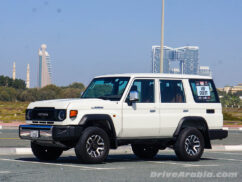
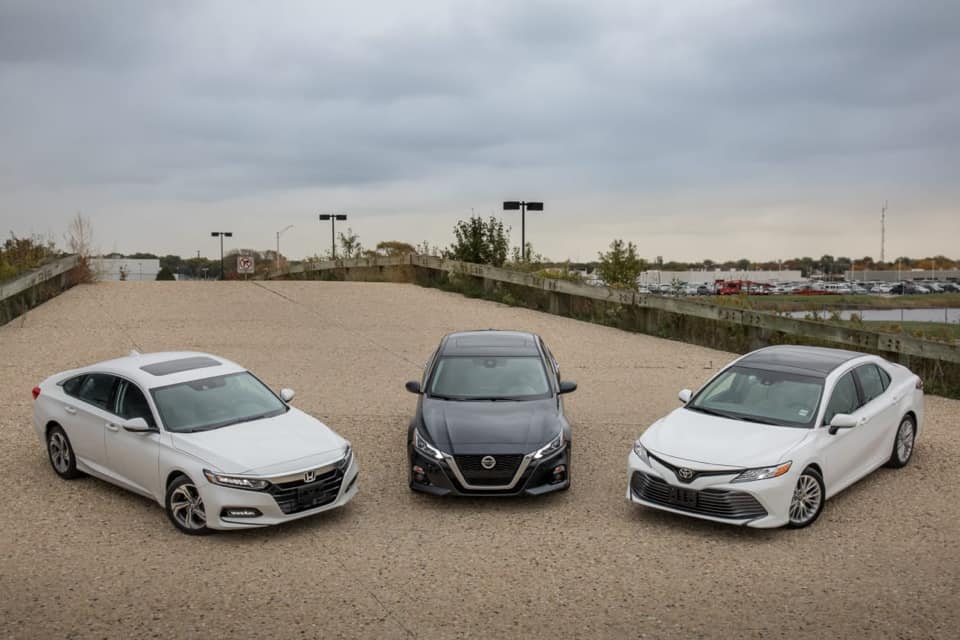
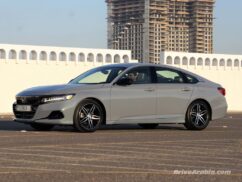
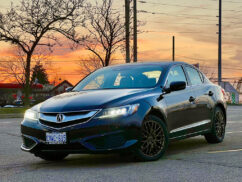
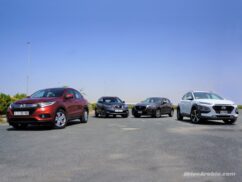
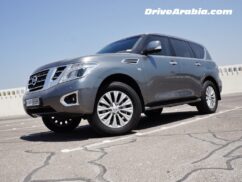
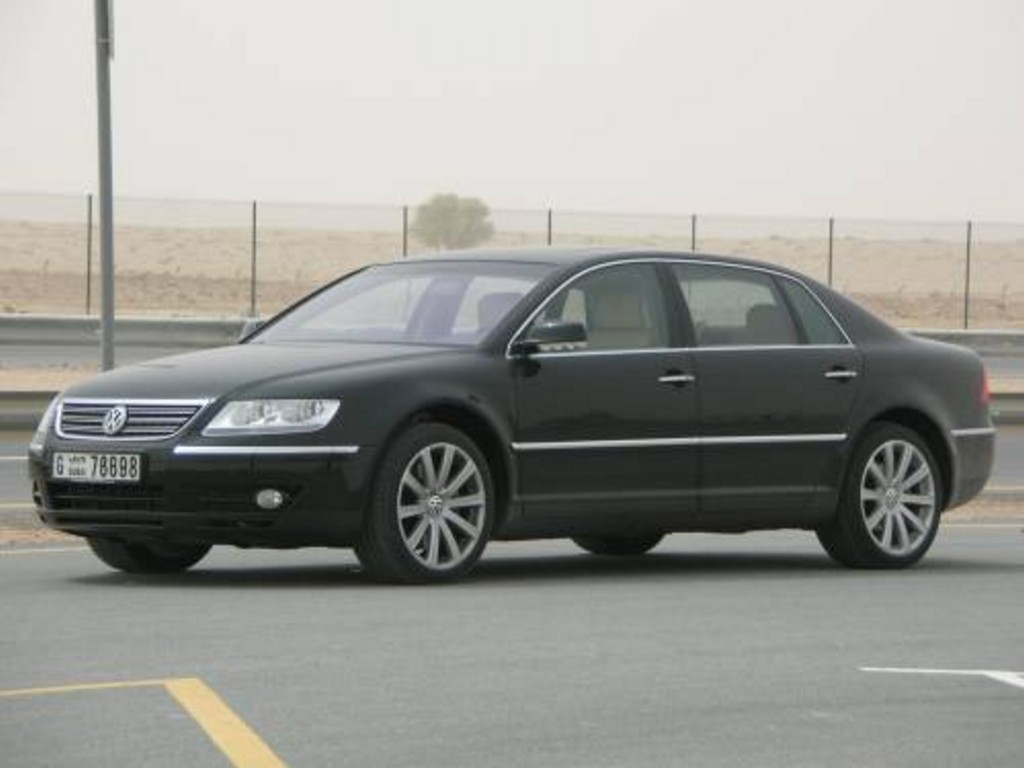
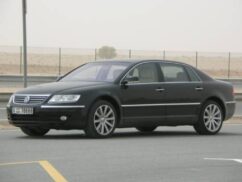
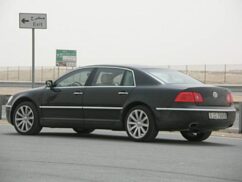
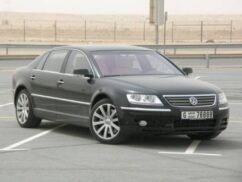

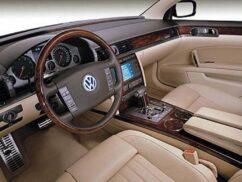
There are no comments. Be the first!